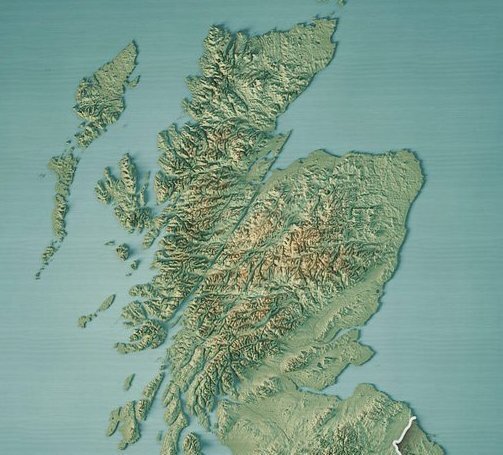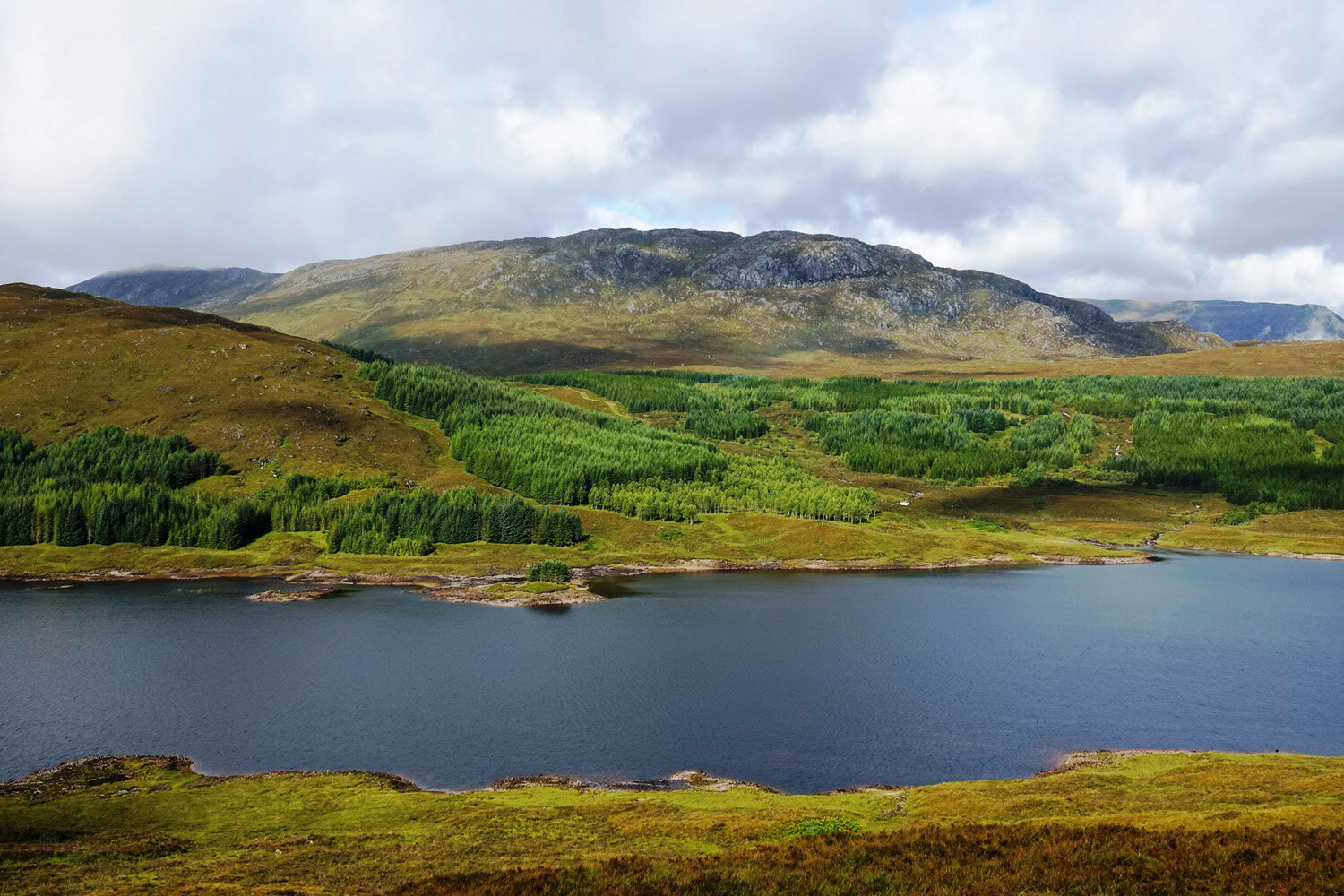A quick look at a topographic map of Scotland reveals the strong and clear pattern of mountains, valleys, lochs and coastline that form the landscape framework of the country.
I was fortunate to travel with my family in the Scottish Highlands in September last year for the first time and experience its spectacular landscapes. We were lucky to have good weather which allowed the full scale and splendour of the Highlands to be revealed but perhaps gave us a somewhat skewed impression of the climate.
Topographic model of Scottish Highlands
Rocky outcrops expose the skeleton of the mountain landscape with a vegetative skin of heath and grasses covering most of it. Swathes of flowering heather together with patches of moss and pasture form a visually diverse but integrated landscape.
In locations where trees have been established the geometric layout of the plantations strongly contrasts with the informal patchwork of heath, grass and rock. It is easy to understand why there has been a long running debate about the visual and ecological impact of establishing and harvesting tree plantations in the Scottish Highlands.
The debate that followed the Second World War led to the appointment of the renowned landscape architect Sylvia Crowe by the Forestry Commission in 1964. Although the initial focus was on financial objectives, the importance of landscape aesthetics was re-established through a combination of environmental policies that were implemented by the late 1980s.
The spectacular landscapes of the Scottish Highlands provide a major source of tourist revenue. Visitors are attracted by what they perceive to be Scotland’s unspoiled landscape. Consequently the promotion, regeneration and restoration of native woodlands are seen as economic necessities if the landscape character that most visitors to Scotland expect to see is to continue to be retained. Timber-producing single-species timber plantations are being partly replaced by the preferred forest type of diverse species that feature Scots pine and oak woodlands.
A key aspect of travelling in the Scottish Highlands is the clear relationship between the road alignment and the topography with roads generally running either along the water edge of lochs or along the base of valleys. The experience of crossing the divide between valleys provides spectacular panoramic views from the tops of the divides.
Travelling within the valleys of the Highlands provides a strong sense of enclosure with mountain slopes rising sharply from the valley floor. In those valleys containing lochs the water surface provides a constantly changing reflection of the sky and adjoining mountain slopes. Fast moving clouds and changing light and shadow across the landscape add to the dynamic experience of travelling through the Highlands.
One somewhat surprising aspect of the Highlands landscape was the abundance of water with the constant flow of streams and waterfalls fed by seepage from the peat and shallow soils on the mountain slopes even when it is not actually raining.
The rugged natural character of the Highlands landscapes enhances the appreciation of various elements of constructed infrastructure such as the locks along the Caledonia Canal at Fort Augustus that raises vessels 12 metres from Loch Ness to Loch Oich. The sequence of opening and closing the gates to flood and empty the five locks to allow boats to traverse the level change provided a memorable experience and an appreciation of the engineering skill and determination of the builders in 1816-20.
A memorable aspect of the Highlands is the cultural heritage that is expressed by historic structures that include forts, castles and mansions, both occupied and abandoned that punctuated the landscape. Each structure has a distinctive relationship to the landscape in which it sits. In many situations forests and planted trees form key elements of the landscape setting.
The absence of trees in most situations allows for long distance panoramic views in which the topography, light and shadow are in a constant and dramatic state of flux. My strongest memory of travelling in the Highlands is the sense of being somewhat overwhelmed by the scale of the landscape while being inspired by its beauty and drama.
























